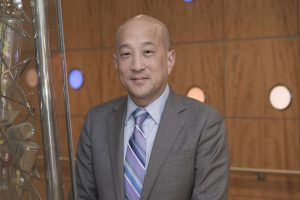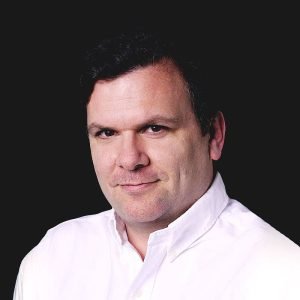Session Description: Cancer is the second biggest killer in the United States. But enormous advances are being made in detection and treatment. Will AI, data analytics, precision medicine, genomics, and CRISPR turn the tide?
Below is an excerpt of the panel. The full transcript can be accessed here.
Salisbury: My name is Meredith Salisbury, I write for Techonomy. I also work for a PR firm called Bioscribe. What we wanted to do with this panel is look at the very cool things happening on the tech side, on the science side. The way we chose to look at that was through the lens of cancer. We could sit here for days, and talk about genomics and CRISPR, and all sorts of things. We are going to try and use cancer as a lens through which to view all of this and tease out some of the opportunities and obstacles that we’re seeing. With me I have Jill, from Color Genomics, I’ve got Andrew from Memorial Sloan Kettering, and Eric from Mt. Sinai. I just want to start very briefly with some success stories. I like to do the good news first. I want to look at some of the opportunity we have in cancer, in related fields, through some of the most exciting things we’re seeing. Jill, do you want to start?
Hagenkord: Sure. My background, I’m a board-certified pathologist, with sub-specialty boards in molecular genetic pathology. I also did a fellowship in informatics. Essentially, I’ve been doing precision medicine since before precision medicine had a name.
Salisbury: You see why I’m a fan?
Hagenkord: [LAUGHS] There’s been this promise since early in my career, that we were going to get to a point where we could actually start doing real, preventative genetics, and preventative medicine, more genomics-driven preventative medicine. We’re at that point in time right now. It’s an exciting time in genomics, when we can start to see it reach a price point, where we can get it outside our broken healthcare system, which doesn’t pay for preventative health, right? It’s not incentivized to do that. Now, it’s cheap enough we can get it outside the system and consumers can pay for it themselves or self-insured employers can provide it as a health benefit for their employees. Inherited disease testing I think is one of the lowest-hanging fruits in genomics. Companies like Color, for $249 you can look at 30 genes associated with hereditary cancer and have all the complimentary genetic counseling that you need. Everything is online, spit-faced, on your mobile phone, connected with your doctor. Your physician is ordering the test. We really removed all of the barriers to getting preventative information about yourself, so that you don’t have to actually develop the cancer. You can hopefully, if you’re at high risk, determine that ahead of time and prevent yourself from getting cancer in the first place.
Salisbury: Jill, just tell people, $249 sounds great but tell us what that was in comparison to.
Hagenkord: Right. A few years ago, Myriad was kind of the only show in town and they gave me two genes. They gave you BRCA1, BRCA2 and it was about $4,000. We’ve really come a long way in just a few years and that’s really due to the maturation of next gen sequencing.
Salisbury: Andrew, you’ve been doing amazing things with actually treating patients who have very advanced stages of cancer with personalized approaches. Tell us about that.
Kung: I think the conversations taking place here today are so timely for cancer medicine. For the first time, in my career at least, I can finally say I’m an oncologist and it’s an exciting time to be an oncologist.
Kung: Why is that? Because we’re living through a convergence of new technologies, new therapies, that we’re finally starting to see the fruits of 30, 40 years of research actually impacting the patient in the clinic. The personal story I would put to contextualize this, is that when I started as a medical student 30 years ago in 1987, when we went around and did rounds on patients, checked-in on patients, I would carry with me an index card. Each patient had an index card and the information that I needed to know to take care of that one patient was contained on that one index card. Now fast forward 30 years, to where we are now, and in order for me to take care of my patients, I have to now be able to sift through gigabytes of data and find that needle in a haystack. The transformative power of being able to do this is really quite real. I’ll give you one example of a patient treated at our center. This is a young seven-year-old girl, who at the age of five had been diagnosed with a very unusual tumor. We look under the microscope, it was very hard to tell what it was, and because of that our therapies are generally guided by what the diagnosis is, this child was treated with a variety of different toxic therapies. She went through some 20 cycles of chemotherapy, endured four or five different surgeries, and then at the end of this course was told, after three years of therapy, there’s nothing more we can do. The tumor has grown back, and we have no other options. She was actually transitioned over to palliative care, end of life care. She ended up coming to our center, where we took all the approaches that we could, in terms of characterizing her tumor from a genetic point of view, from looking at her DNA, looking at the RNA in her tumor cells.
What we found was that her tumor contained a breakage between two of the chromosomes and a rejoining of those two chromosomes in a way that had never been described before. It resulted in a protein that no one within the biomedical community had ever seen, but it turns out that one of the partners that the breakage was centered around was a protein called AKT, which we do have drugs for. Now, the traditional way of approaching this patient would’ve been to say, “That’s great. We will go into the lab and study this protein, and maybe ten years from now figure out how it works, and whether we can treat this particular tumor using this drug.” But, ten years from now that patient would not be with us.
Instead what we did was, we went to our adult colleagues who actually were testing in a phase I trial, an inhibitor of AKT. We convinced the company to let us try it in this child. This drug had never been in a trial before, but we obtained the drug on a “compassionate use” basis, and gave it to the child. Within 30 days, the tumor had completely disappeared. She had achieved a complete remission. This is a child whose cancer was driven by an alteration no one had ever seen. She was given a drug that no child had ever received. But our ability to match specific deficiencies that result in cancer with potential therapies is really underscored by this example. We have reached a point where we can actually use the kinds of technologies we’re talking about today to impact a patient in the clinic. That’s why I say, “I’m excited to be an oncologist.”





